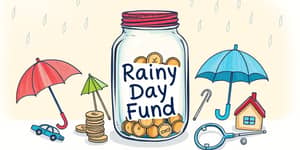Every individual deserves access to better loan rates, lower interest charges, and greater purchasing power—all without opening their wallet further. Improving your credit score can unlock these benefits, and you can achieve it without spending a single cent out of pocket.
In this comprehensive guide, we’ll demystify the factors influencing your credit health and provide proven, zero-cost strategies to boost your score. By following these steps diligently, you’ll be on your way to financial freedom and stability.
Whether you’re aiming to qualify for a mortgage, secure a car loan, or simply achieve peace of mind, these tips will empower you to take control of your credit profile.
Why Your Credit Score Matters
Your credit score—a three-digit number typically ranging from 300 to 850—serves as the primary gauge lenders use to assess your creditworthiness in every transaction. A higher score can mean lower interest rates, better terms on credit cards, and even advantages in job or rental applications.
Beyond interest savings, a strong credit profile demonstrates financial responsibility and opens doors to premium credit cards, higher borrowing limits, and accelerated approval processes. Falling short on repayments or carrying high balances can lock you into costly borrowing cycles and delay your financial goals.
The Five Core Factors at a Glance
Understanding which elements drive your score helps you focus your energy where it counts most. Below is a breakdown of the standard FICO scoring components:
By targeting the highest-impact areas—especially payment history and utilization—you can realize significant score improvements without paying a dime.
No-Cost Strategies to Supercharge Your Score
Below are eight actionable methods you can implement today. Most require only time, attention, and consistency rather than cash.
- Always pay bills on time: Since payment history accounts for over a third of your score, setting up calendar alerts or free automatic reminders is critical. Even if you’ve fallen behind, a streak of on-time payments will gradually repair your credit standing.
- Reduce credit utilization ratio: Aim to use less than 30% of your total credit limits. Spreading small balances across multiple cards or paying down charges before statement closing dates can help you optimize your credit utilization ratio.
- Review credit reports for errors: You’re entitled to at least one free credit report annually via AnnualCreditReport.com (U.S.) or equivalent services. Disputing inaccuracies—such as fraudulent accounts or incorrect late payments—can produce an immediate boost from corrected errors.
- Avoid unnecessary credit inquiries: Each hard inquiry drags your score down by a few points. Only apply for new credit when essential, and group rate-shopping within a short timeframe to lessen the impact.
- Keep old accounts open: The length of your credit history matters. Closing long-held cards reduces your average account age and increases utilization, so keep these accounts active with occasional small charges.
- Leverage alternative payment reporting: Services like Experian Boost allow you to include rent, utilities, and streaming payments—at no cost—so your on-time payments are factored into your score for certain scoring models.
- Become an authorized user: If a trusted family member or friend adds you to a long-standing account, you inherit their positive payment history without touching the card yourself.
- Keep accounts active: Cards inactive for extended periods can be closed by issuers. Using them for small recurring subscriptions or micro-purchases ensures they remain open, helping maximize your available credit limits.
Consistency is your ally. While some strategies yield instant improvements, others—like lengthening your credit history—require patience and ongoing commitment.
Common Pitfalls to Avoid
Even well-intentioned actions can backfire if not executed carefully. Steer clear of these mistakes:
- Missing payments, even once, can lead to a significant negative mark that lingers up to seven years.
- Opening multiple new accounts in quick succession will lower your average account age and trigger several hard inquiries.
- Closing long-held cards reduces overall credit availability and may spike your utilization ratio unexpectedly.
By recognizing and avoiding these errors, you safeguard the progress you’ve made and maintain upward momentum in your score.
Free Tools and Resources
Empower your credit journey with these no-cost services:
AnnualCreditReport.com (U.S.) grants you free access to reports from the three major bureaus. Equivalent organizations exist in Canada, the U.K., and other regions, allowing you to monitor for inaccuracies and identity theft alerts.
Experian Boost and alternative rent-reporting platforms tally nontraditional payments—like rent, utilities, and phone bills—into your credit profile. This can be valuable for FICO 9 and VantageScore models.
Many credit unions and community banks offer free financial counseling sessions and credit workshops. Attending these events can deepen your understanding and introduce you to localized assistance programs.
Conclusion: Your Path to Better Credit Starts Now
You don’t need substantial funds to elevate your credit score. By focusing on strategic, no-cost actions—from on-time payments to intelligent utilization management—you can unlock the doors to more favorable lending terms and financial opportunities.
Commit to the steps outlined here, use the free resources available, and track your progress month by month. In time, you’ll look back and realize that raising your credit score without spending a cent was not only possible but empowering.
References
- https://www.canada.ca/en/financial-consumer-agency/services/credit-reports-score/improve-credit-score.html
- https://www.experian.com/blogs/ask-experian/credit-education/improving-credit/improve-credit-score/
- https://www.nerdwallet.com/article/finance/raise-credit-score-fast
- https://www.cpacanada.ca/news/canada/improving-credit-score
- https://www.mycanadapayday.com/educate/credit-reports/methods-to-raise-credit-score-without-a-card
- https://www.badcredit.org/how-to/credit-score-statistics/
- https://www.equifax.com/personal/education/credit/score/articles/-/learn/how-to-improve-credit-score/
- https://www.td.com/us/en/personal-banking/7-ways-to-improve-your-credit-score










